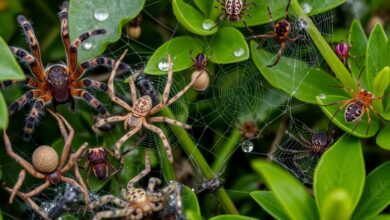Discover the Most Venomous Spider in the World
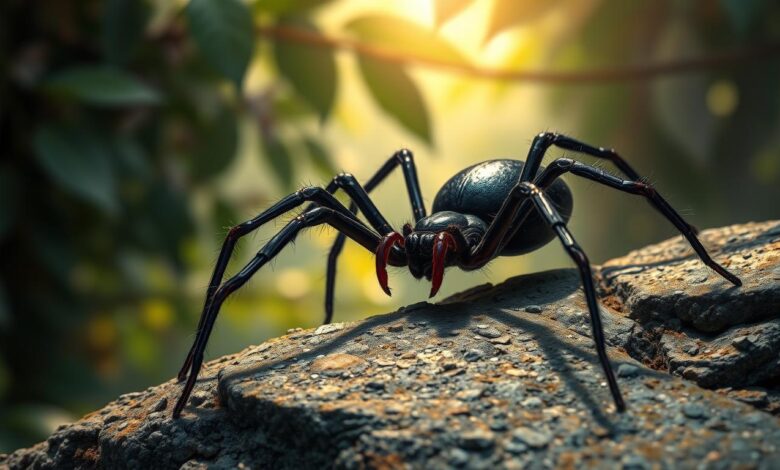
Get ready for an exciting journey into the world of the most venomous spiders. You’ll meet the Black Widow and the Six-eyed Sand Spider, among others. These spiders can make even the bravest people feel scared.
Learn about their venom, how they behave, and the dangers they pose to humans. Discover the interesting facts that make these spiders both fascinating and dangerous. Let’s dive into the world of the planet’s most venomous spiders.
Creepy Crawlies: The World’s Most Venomous Spiders
The world is full of different spider species, but some are known for their deadly venom. The Sydney funnel-web and the black widow are among the most venomous. They are feared by many. Let’s look at the top 5 dangerous spider species and what their venom can do.
Spiders are interesting, but some can be dangerous to humans. Knowing about the deadliest arachnids helps us stay safe. We can be careful and respectful when we meet these venomous spiders.
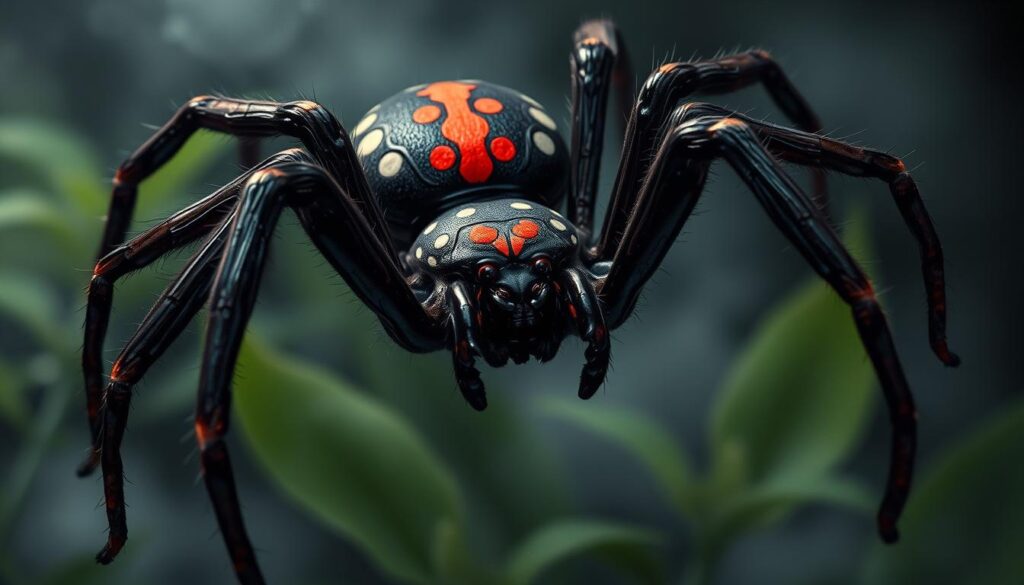
Spider season is here in the UK, with millions of spiders around. A TikTok video showed a driver finding a spider in her car. This led to a lot of views and talk about the dangers of driving badly because of a spider.
Experts say to keep cars clean to avoid attracting spiders. Check your car for spiders, especially under seats or near seatbelts. Using citrus-based air fresheners or lemon peels can also help keep spiders away.
When you’re outside or in the city, knowing about the most venomous spider species is important. It helps you stay safe and enjoy seeing these amazing spiders.
Sydney Funnel-web Spider: Australia’s Deadly Arachnid
The Sydney funnel-web spider (Atrax robustus) is found in eastern Australia. It’s known for being very aggressive and having venom that can be deadly. If not treated, its venom can cause serious symptoms and even death.
Aggressive Behavior and Potent Neurotoxins
The Sydney funnel-web spider is very aggressive. It will stand up and show its big fangs when scared. Its venom has strong neurotoxins that can harm the nervous system.
This can lead to severe pain, muscle spasms, trouble breathing, and heart problems. In some cases, it can be fatal without quick medical help.
Antivenom: A Life-Saving Solution
But, there’s good news. An effective antivenom has been developed. It’s made from the spider’s venom and has greatly reduced death rates from bites. If given quickly, most people recover fully.
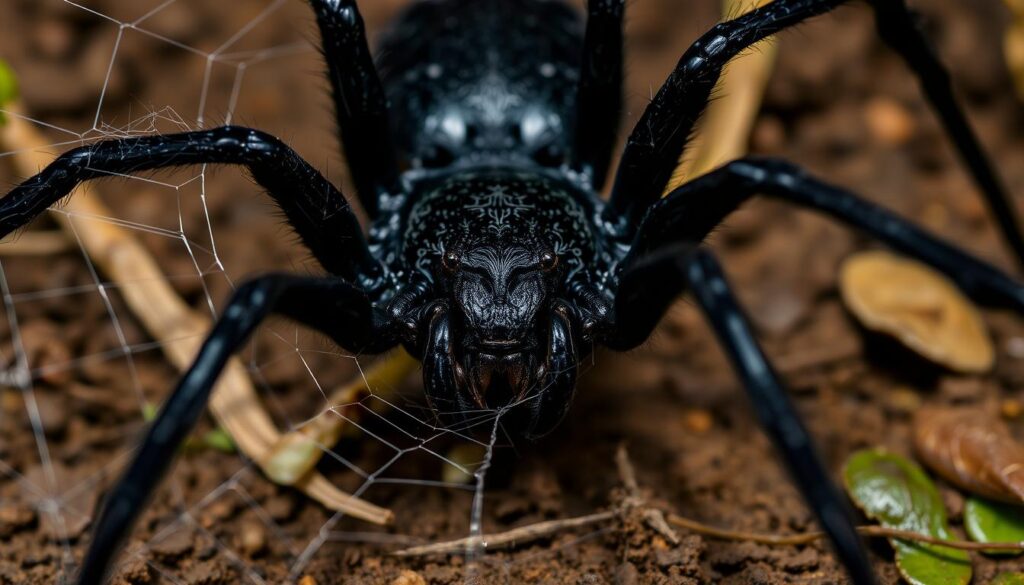
The Sydney funnel-web spider shows the danger some Australian spiders can pose. Knowing about its aggressive nature and venom, and the antivenom’s power, helps us stay safe. It’s crucial to act fast if bitten by one.
Brazilian Wandering Spider: The Nightmare of Banana Plantations
The Brazilian wandering spider, also known as the “banana spider,” is a dangerous arachnid found in Central and South America. It is known for its aggressive behavior and neurotoxic spider venom. This venom can cause severe pain, irregular heartbeat, and breathing problems. While deaths from its bite are rare, its hiding in banana plantation shipments has made it infamous.
The Phoneutria genus, which includes the Brazilian wandering spider, is known for its unpredictable and defensive nature. These spiders attack without warning, making them a threat to anyone. Their aggressive spider behavior is a big problem in banana-producing areas. This is because they might be transported with the fruit, putting workers and consumers at risk.
Even though the venom of the Brazilian wandering spider is very potent, there are effective antivenoms available. But, it’s important to get medical help quickly. The neurotoxins in the venom can harm the body fast if not treated. Knowing the risks can help people avoid dangerous encounters with this spider.
| Characteristic | Description |
|---|---|
| Brazilian Wandering Spider | A highly venomous spider found in Central and South America, known for its aggressive behavior and potent neurotoxic venom. |
| Phoneutria Genus | The genus to which the Brazilian wandering spider belongs, renowned for its unpredictable and defensive nature. |
| Banana Plantations | The spider’s tendency to hide in banana shipments has earned it the nickname “the nightmare of banana plantations,” posing a risk to workers and consumers. |
| Neurotoxic Venom | The venom of the Brazilian wandering spider contains potent neurotoxins that can cause severe pain, irregular heartbeat, and respiratory distress. |
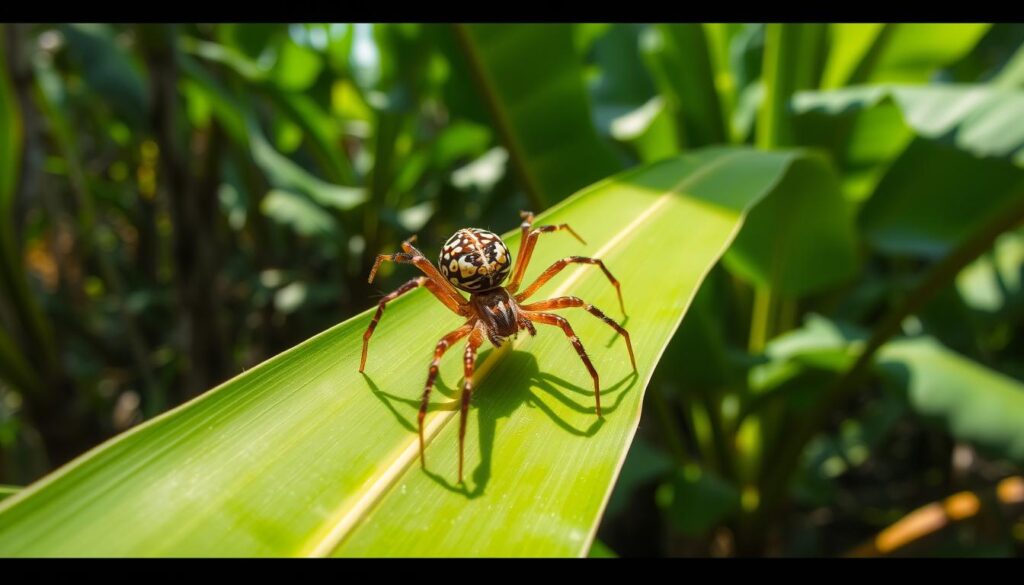
Black Widow Spider: The Iconic Hourglass of Venom
The black widow spider (Latrodectus mactans) is well-known and feared worldwide. It’s famous for its red hourglass mark. This spider is found everywhere, especially in North America, from Canada to Mexico.
Worldwide Distribution and Neurotoxic Bite
Black widow spiders can live almost anywhere. They like woodpiles, sheds, and even cities. Their bites are painful and can cause muscle spasms. But, thanks to medicine, deaths from these bites are now rare.
Their venom has neurotoxins that mess with the nervous system. This can cause severe pain, nausea, and breathing problems. But, with quick medical help and antivenom, serious issues are much less common.
| Characteristic | Description |
|---|---|
| Appearance | Glossy black body with a distinctive red hourglass marking on the underside |
| Size | Females can grow up to 1.5 inches in length, while males are typically smaller |
| Habitat | Found worldwide, particularly in North America, in a variety of environments including woodpiles, sheds, and urban areas |
| Venom | Neurotoxic, capable of causing severe pain, muscle spasms, and respiratory distress |
| Fatality Rate | Significantly reduced in recent years due to advancements in medical treatment and the availability of antivenom |
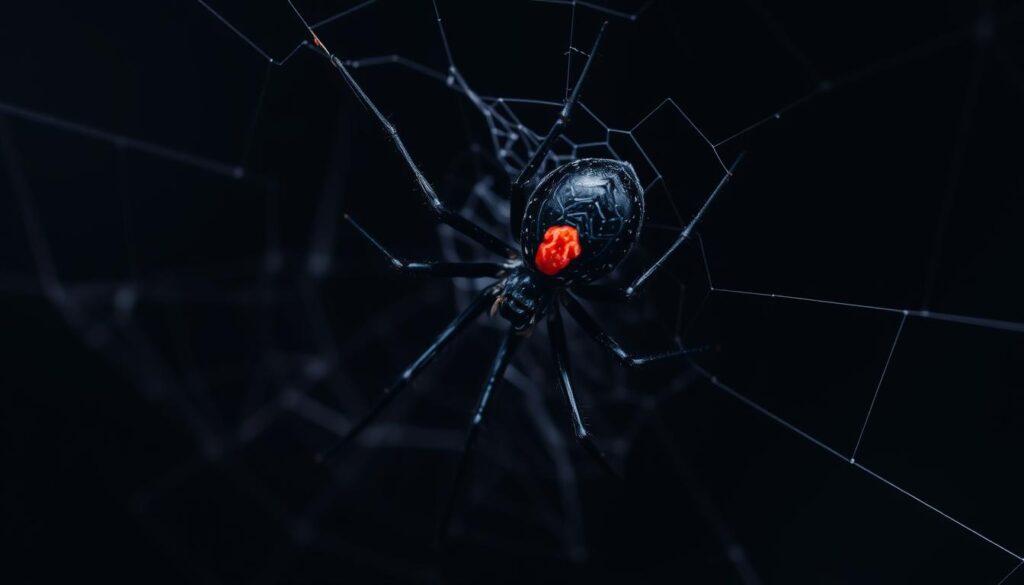
Most Venomous Spider: Unleashing Nature’s Deadliest Venom
Several spider species are known for their deadly venom. These spiders have powerful toxins that can be very dangerous to humans. Knowing what makes some spiders the deadliest helps us understand their dangers.
The Brazilian Wandering Spider and the Sydney Funnel-web Spider are especially deadly. The most venomous spider, the Brazilian Wandering Spider, has venom that can cause serious health issues. The Sydney Funnel-web Spider’s venom can lead to intense pain and even heart failure.
| Spider Species | Venom Potency | Venom Composition | Venom Effects |
|---|---|---|---|
| Brazilian Wandering Spider | Highly Potent | Powerful Neurotoxins | Respiratory Failure, Potential Death |
| Sydney Funnel-web Spider | Extremely Potent | Neurotoxins, Cytotoxins | Intense Pain, Muscle Spasms, Potential Heart Failure |
The venom of these spiders shows their amazing adaptations. By studying their venom, we learn about their dangers. This knowledge helps us understand the risks they pose.
Redback Spider: Australia’s Urban Menace
When you step into your backyard or a dark corner of your home in Australia, you might see a spider with a red stripe. This is the redback spider (Latrodectus hasselti). It’s a relative of the black widow spider and a big threat in urban areas.
Distinctive Markings and Dangerous Neurotoxins
The redback spider has a black body and a bright red or orange stripe. This color warns of its strong neurotoxins. A bite can cause a lot of pain, muscle weakness, and breathing problems. But, thanks to antivenom, deaths are rare.
Redback spider bites are not usually deadly, but they’re still a big worry in cities. It’s important to be careful and know what to do if you see one. Their bites can cause serious symptoms that need quick medical help.
The redback spider is very good at living in cities and has powerful venom. Knowing the dangers and taking steps to stay safe lets you enjoy the outdoors without fear of this redback spider.
Chilean Recluse Spider: The Necrotic Bite
The Chilean recluse spider is among the most venomous in the world. Its venom is highly toxic and can cause severe damage. This damage can lead to necrosis, a serious condition.
The spider’s venom attacks the skin and tissues beneath. This can cause large, painful ulcers at the bite site. These ulcers can grow fast, leading to infections and even tissue death.
While deaths from these bites are rare, the effects can be severe if not treated. Quick medical care is key. It can prevent serious issues like scarring or even losing a limb.
| Symptom | Description |
|---|---|
| Spider Bite Symptoms | The bite may not hurt at first. But soon, it will become red, swollen, and painful. A central blister or ulcer will form. |
| Spider Venom Necrosis | The venom can cause severe tissue damage and necrosis. This leads to large, deep skin ulcers that grow fast. |
| Spider Bite Complications | Untreated bites can lead to serious issues. These include infections, blood clots, and organ damage, especially in those with weak immune systems. |
In conclusion, the Chilean recluse spider’s venom is very dangerous. Knowing the symptoms and complications is key for quick medical help. By spreading awareness and the need for professional care, we can reduce the risks from this spider.
Six-eyed Sand Spider: Venom More Destructive than Recluse Spiders
In southern Africa’s deserts, the six-eyed sand spider (Sicarius spp.) lurks. It’s a venomous arachnid that’s not well-known. Its flat body and six eyes help it hide in the sand, making it a skilled hunter.
The six-eyed sand spider’s venom is very powerful. It’s even more harmful than the venom of recluse spiders. Its venom can cause severe haemorrhaging and tissue damage. This makes it a big threat to anyone who gets bitten.
Elusive Desert Dwellers with Haemorrhagic Venom
Unlike recluse spiders, which can cause necrotic bites, the six-eyed sand spider’s venom is different. It’s a haemorrhagic venom that can harm the body a lot. Since there’s no antivenom, a bite can be very dangerous.
The six-eyed sand spider is a deadly creature. It’s a silent hunter that hides in the sand. It waits to attack with its venom-fueled assault on unsuspecting victims.
Katipo Spider: New Zealand’s Venomous Red-Striped Arachnid
The Katipo spider lives in New Zealand’s coastal areas. It’s known for its red stripe and venomous bite. Its venom can cause severe pain, muscle cramps, and other serious issues in humans.
While it’s rare for the Katipo’s bite to be fatal, it’s still dangerous. It’s important to be careful when you see this spider, especially in coastal areas.
The venom of the Katipo spider is similar to the black widow’s. It can lead to severe pain, muscle spasms, and breathing problems. Luckily, antivenom has made these effects less deadly. Still, getting medical help right away is key if you think you’ve been bitten.
When you’re in New Zealand’s coastal areas, watch out for the Katipo spider. They like to hide in small spaces, under rocks, and in thick plants. Being careful and aware of their venom helps you enjoy New Zealand’s nature safely.
